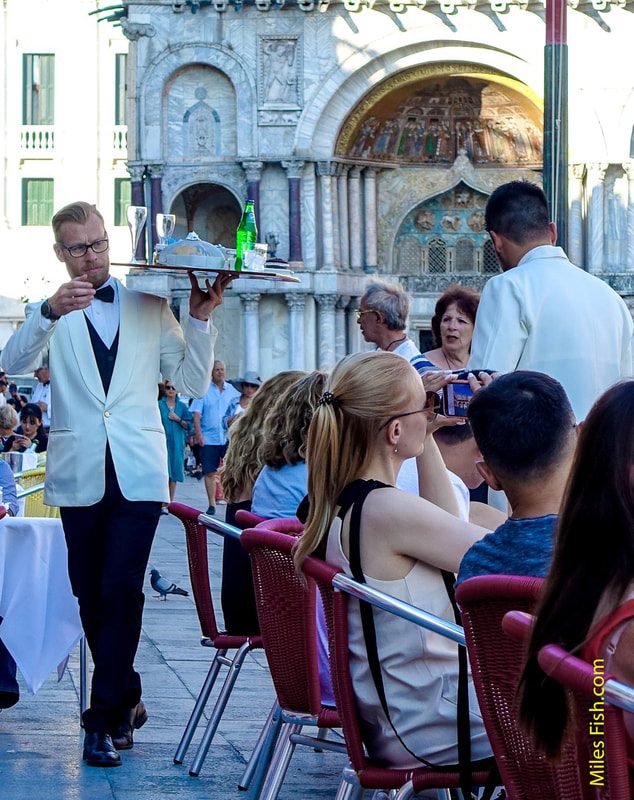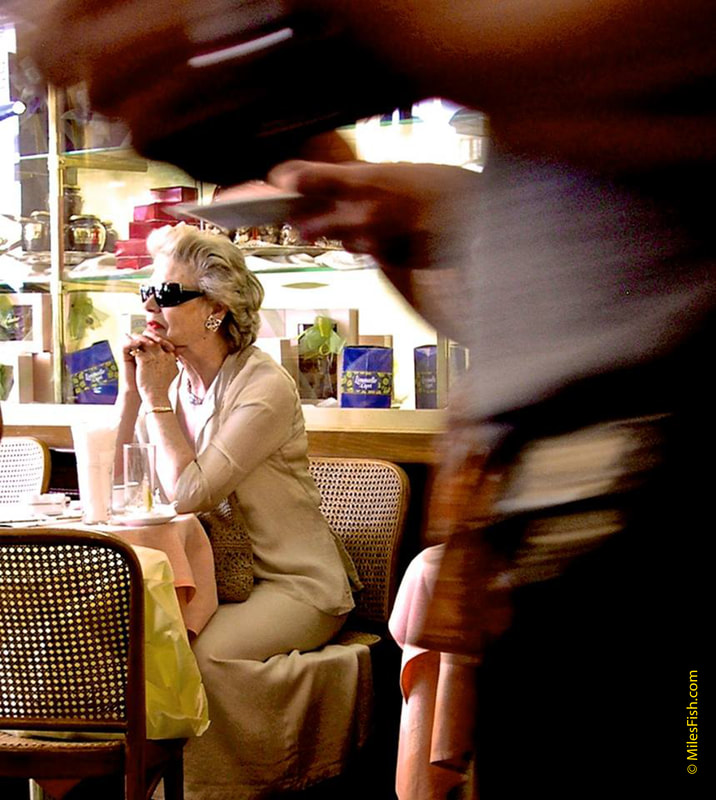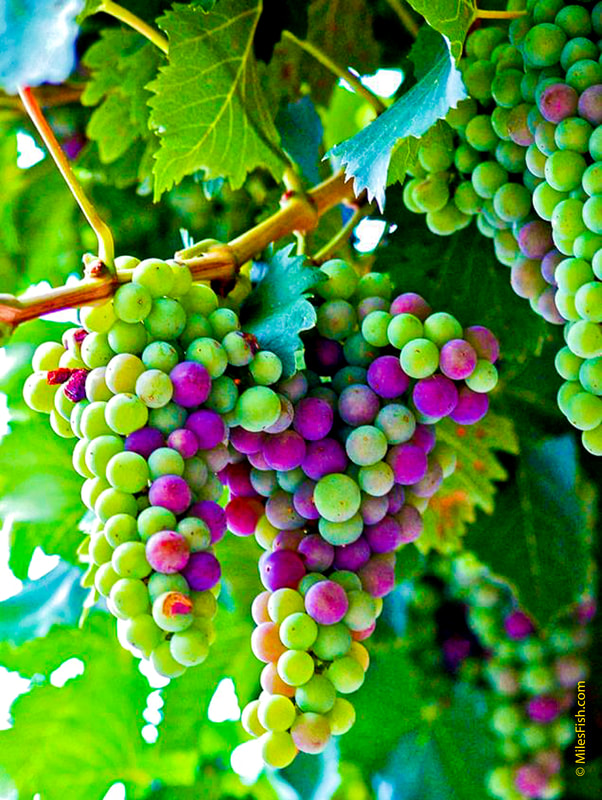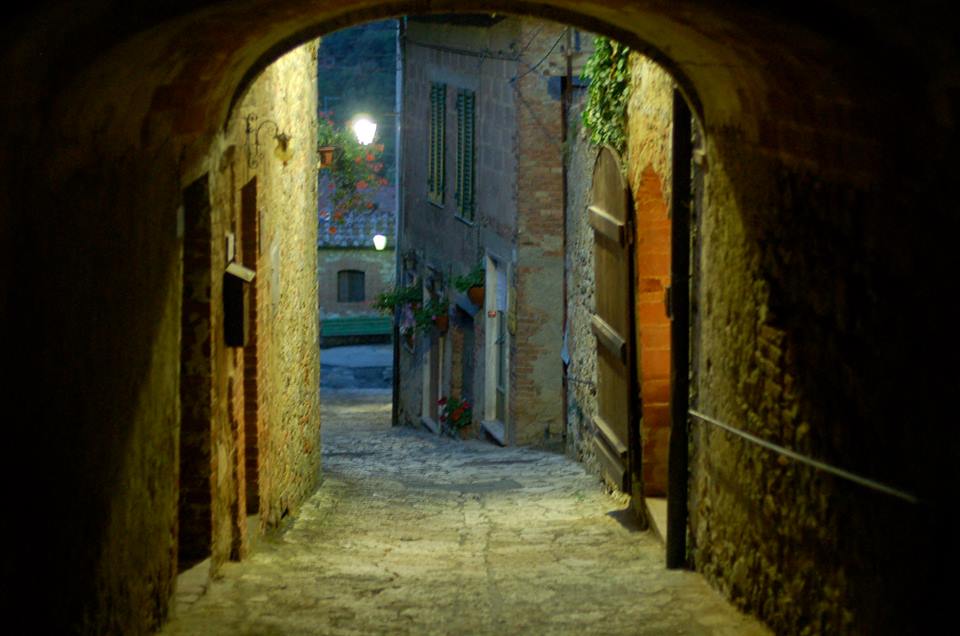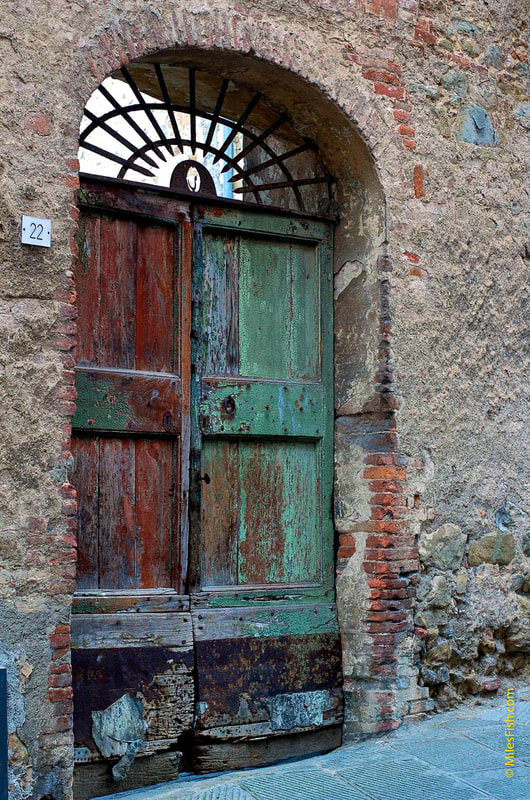Americano : Italia
Survival Notes for an American in Italy
by Miles Dayton Fish
"L'ignoranza non è una scusa"
"Ignorance is no excuse"
©MilesFish.com
I. Dining out in Italy
II. Eating Establishment in Italy
III. Your U.S. Passport
IV. Credit/Debits Cards & Cash
V. Cars in Italy: Renting / Driving
VI. Drugs
VII. Electrical Convertors
I. Dining in Italy
MEALS in ITALY—
SECTIONS OF AN ITALIAN MEAL--
Traditional Italian menus have five sections. A full “formal” Italian meal usually consists of
these courses:
NOTES ABOUT THE MEAL COURSES
CAFFÈ
WHAT TO DRINK WITH LUNCH/DINNER
PIZZA
TAKE YOUR TIME…you’re in Italy now
Comments/Questions/Corrections welcomed at: MilesFish@mac.com
______________
- COLAZIONE—breakfast is usually served until about 10:00AM and often consists of cappuccino or caffè latte, bread, jam. cheese, and yogurt.
- PRANZO—lunch is served between 1:00PM and 4:00PM. Restaurants don’t usually open for lunch until 1:00PM.
- MERENDA—mid-afternoon snack of gelato, cookies or fruit.
- CENA—dinner is usually served between 7:30PM and 10:00PM.
SECTIONS OF AN ITALIAN MEAL--
Traditional Italian menus have five sections. A full “formal” Italian meal usually consists of
these courses:
- ANTIPASTO—(anti—“before”—the pasta dish) an appetizer of cold cuts and cheese,
- PRIMO—the first course, usually pasta but could be soup or a rice dish; it is a continuation of the antipasto. Note the primo (pasta) dish is not a main course nor is the pasta dish served with the main course.
- SECONDO—the main course of meat, poultry, or fish.
- CONTORNO—a vegetable side dish or salad (insalata). Note: a salad is eaten either with or
- DOLCE—dessert, often fruit.
NOTES ABOUT THE MEAL COURSES
- American’s often order only a Primo (pasta dish). This is a very tourist thing to do—and I am as guilty as the next tourist. Consider ordering at least two choices when you eat out—Antipasto and Primo (appetizer then pasta) or Primo and Secondo w/Contorno (pasta then meat/poultry/fish with a side dish). Most places also offer vegetarian selections.
- Italians don’t put Parmesan cheese on sea food pasta dishes.They don’t eat bread with the appetizer or pasta course.
- They eat bread with the main course and may drizzle a little olive oil on it (but they do not serve butter for bread).
- There is no such thing as “fettuccine alfredo” or “spaghetti with meatballs” in Italy. And there is no such thing as dipping bread in little dishes of olive oil and herbs.
- Peperoni is a red pepper not a sausage (the sausage one in the US is pepperoni—double p). If you tell your waiter you want a pepperoni pizza you are are going to get a peperoni (strips of peppers) pizza. What you’re looking for is a “pizza al salamino” (check out the PIZZA section below).
- In Italy there is one salad dressing: oil and vinegar (olio e aceto) so there is no reason to ask for anything else.
- Traditionally, Italians peel all fruits before eating them
CAFFÈ
- Coffee is drunk at the end of the meal, never with it.
- If you order coffee in Italy you will be served an espresso.
- For a coffee drink that is closer to home, order “caffè Americano”—a shot of espresso w/hot water.
- Cappuccinos and lattes—white coffees—are not drunk after 10:00 in the morning.
- Cappuccinos and lattes are never drunk with or after lunch, mid-day snack, or dinner.
WHAT TO DRINK WITH LUNCH/DINNER
- Italians usually drink wine or water with meals; beer, soda or water with pizza (they don’t drink wine with pizza, if and when they do it’s a light sparkling wine).
- Often the meal ends with a shot of grappa or limoncello (strong liquors served chilled and neat) or Vin Santo (holy wine—possibly the world’s first communion wines) usually served with cantucci (Sienese take on biscotto) for dipping in the wine.
- If you order a soft drink and you want it with ice, you should order it with ice (and you may get one cube). Italians are not very sympathetic with the American love of iced drinks.
- Spring bottled water is the norm when dining out. Your waiter will request you to order either carbonated (fizzy) or still (non-fizzy).
PIZZA
- The two general types are pizza rossa (red pizzas) and pizza bianca (white pizzas—without tomato sauce)
- The two most common are the thin crust, very plain Pizza Margherita and Pizza Marinara.
- Pizzerias may offer such additional toppings on their Margherita and Marinara pizzas such as prosciutto (finely sliced ham), funghi (mushrooms), and other veggies. Some pizzerias will also offer toppings such as sunny-side up fried eggs, French fries, hotdogs, and additional kinds of cheeses (but no ground beef on Italian pizzas).
- As mentioned earlier, Italian’s DO NOT sprinkle Parmesan cheese on pizza…don’t even ask.
- They drink beer, soda, or water with pizza. They do not drink wine with pizza (unless it’s a light sparkling wine).
- Authentic Italian Pizzas are made according to strict legal guidelines that include baking in a charcoal brick oven (until the crust is slightly charred). Since Italian law will not allow the pizza ovens to be fired up until near sundown, authentic Italian pizzas are only available at night. American style (electric oven) pizzas are available all day/night.
TAKE YOUR TIME…you’re in Italy now
- At dinner, when you eat in a restaurant or bar, the table is yours for the evening. “Turn-Over” is not an Italian concept; the waiter will only bring you your bill after you ask for it.
- Dinner in Italy is a grand affair. Traditional meals may last one or two hours or longer. Learn to love it.
Comments/Questions/Corrections welcomed at: MilesFish@mac.com
______________
II. Eating Establishments in Italy
- BAR—Usually smallish family-friendly establishment serving snacks, light meals and wine (not a a cocktail bar)
- CAFFE:—Same as Bar but with coffee emphasis.
- AMERICAN BAR—Cocktail bar (not many of them in Tuscany—Italians aren't much on mixed drinks; the sign outside will clearly state “American Bar” or “Bar Americano”).
- PASTICCERIA—Pastry shops to take-away or eat-in (they sometimes have meats, cheeses, olives, and wine).
- PANINOTECA—Italian sandwich shop cured meats on assorted breads.
- PANNIER—Sandwich shop food trucks; you’ll see them at the Siena Wednesday morning market.
- GELATERIA—Italian ice cream shop (wonderful!). Perfect way to end the day.
- OSTERIA—Simple restaurant with simple meals and vino by the pitcher (I’m told that in the old days an Osteria was a restaurant connected to an inn—think hotel coffee shop).
- TRATTORIA—Another simple restaurant but possibly an up-grade in size and menu selections from the Osteria. (Trattoria in the US is a somewhat pretentious term; not so in Italy, a Trattoria is a place for great simple peasant food.)
- RISTORANTE—Elegant eating establishment with prices to match.
- ENOTECA—Bar where only wine is served and wine may be for sale by the bottle to take-away.
- PIZZERIA—There are two kind of pizzerias in Siena. 1. Authentic Italian Pizza baked in a charcoal brick oven and 2. Non-authentic pizza baked in electric ovens like in the U.S. NOTE: you can only get Authentic pizza after 7:30 PM, Italian law prohibits firing up the charcoal ovens until near sunset. Also note that in Siena there are several affordable pizza-by-the-slice shops that cater to students.
- PIZZICHERIA—A shop selling ready to eat meat and cheese and other prepared simple dishes. (There are several in Siena’s center city; their lunch prices are cheap to moderate so I eat there often—you can eat in or take-away).
- CANTEEN—Universita cafeterias; there are three of them in Siena and NWACC students may eat an all three.
- IRISH or AUSSIE PUBS—Most Italian university towns have them. They are late night drinking establishments that cater to mostly non-Italian students. Be careful.
Comments/Questions/Corrections welcomed at: MilesFish@mac.com
____________________
III. Y O U R U. S. P A S S P O R T
YOU MAY NEED YOUR PASSPORT WHEN YOU...
I always carry a color copy of my passport photo/data page along with my drivers license
and NWACC photo ID.
accompany them to your hotel or apartment and collect your original passport or they can
require you to produce it within 12 hours (never known either of those things to happen).
Comments/Questions/Corrections welcomed at: MilesFish@mac.com
______________
- Check your luggage for international flights
- Board your flight
- Go through customs at the airport
- Cross the border into a new country (private or public transportation)
- Purchase an Italian cell phone
- Send stuff home
- Rent a car
- Drive a car
- Email or surf the net at a public computer such as hotel lobbies and internet cafes
- Register in person at university or college
- Check into any hotel in Italy
- PERSONAL NOTE: I carry my passport along for all of the above; the rest of the time I
I always carry a color copy of my passport photo/data page along with my drivers license
and NWACC photo ID.
- OFFICIAL NOTE: By law you must be able to show identification at all times and in most
accompany them to your hotel or apartment and collect your original passport or they can
require you to produce it within 12 hours (never known either of those things to happen).
- If you are stopped while driving you must show your full passport (that happens all the time).
Comments/Questions/Corrections welcomed at: MilesFish@mac.com
______________
IV. CREDIT/DEBIT CARDS & CASH
- Discovery Cards are not accepted at many places. However, establishments accepting Dinners Club will accept Discovery in Europe. American Express is accepted at most. Visa and Master Charge are accepted just about everywhere.
- Some small cafe/restaurants/shops do not accept credit cards; others will accept for purchases of €20 or more so always have cash available. That's all rapidly changing. Soon, no doubt, everyone in Italy will take plastic but until then...be prepared with cash.
- Phone your credit card companies and inform them that you will be using your cards while you are out of the US.
- And ask your credit card company if they apply “foreign transaction” fees—these can get expensive so use the cards that do not charge extra fees.
- Make a copy of your credit/debit cards numbers, security numbers, expire dates, and keep it in a safe place. Also record the credit card phone number (national and international) you should call in case of a lost card.
- Do not carry US dollars and exchange them for Euro’s in Italy; often noncompetitive exchange rates, hidden fees, etc. can be extreme. Travelers checks are non-existence.
- ATMs are the way to go. Pay cash at all times if possible. Use your credit cards for larger planned purchases.
- Before you depart, make a person-to-person visit to your bank to make sure your bank knows you will be out of the country using your debit card. Some banks will only OK out-of-the-country use for a month at a time; you should sign up for each month that you will be outside the US. While you are there ask your bank your daily limit for international withdrawals.
- In Italy try to use ATMs that are physically connected to an Italian bank; they will not charge you a percentage for your withdrawals. You will only be charged the fee from your USA bank ($2-$5).
- Other independent ATMs (not connected to an Italian bank--they are everywhere) will charge you a fee of 1-3% plus your USA bank fee.
- Since you will be charged a US bank fee per ATM withdrawal transaction, make larger, less frequent withdrawals.
- When an ATM post a daily limit, remember that that limit is in €s so do the math on the conversion rate and add your US bank fee before you key in an amount.
- Dollar to euro conversion rates change daily; get a free conversion rate app for your phone before you go. Set it at €1.00 = _____USD.
- Here is a simple example for the conversion impaired. If the conversion rate is €1.00 = $1.09 USD and you want to know how many USDs it would take to equal €300.00, multiply 1.09 X 300 = 327. So, it takes $327 to make €300. If your US bank limit is $300 and you key in €300 you will be declined because you are asking for $327.
- When you land in Italy, withdraw enough euro to get you from the airport to your hotel. You can make a larger withdrawal once you get to your destination where the ATM rates are more to your advantage.
- Italian banks are only open in the morning and one hour in the afternoon on weekdays. ATMs are open 24/7 but may run out of money on the weekends.
- Bring backup credit cards (and ATM cards if possible) in case a machine eats your card.
- Make sure your credit/ATM card won’t expire before you return.
Comments/Questions/Corrections welcomed at: MilesFish@mac.com
______________
V. Cars in Italy: Renting and Driving
Things You Should Know if you are going to Rent & Drive in Italy
- Some rental agencies in Italy are: Hertz, Avis, Budget, National, Dollar, Europcar.
- Even when I’m in Italy, I go online and reserve my car. THEN I go the rental office and pick
- Lines for car pickup inside the car rentals establishments are not usually long BUT the
until it’s your turn so allow for this if you are on a strict time schedule. Attendants at the
rentals speak English.
- Remember, you should have an international drivers permit if you drive in
NOTE: you are not required to have the permit to rent a car, you only need your USA
driver’s license and your passport for that. However, if you are stopped by the police
(carabiniere) and you do not have your international permit, you may face heavy fines and
possibly have your rented car impounded.
- Carry your passport when you are driving (not a copy of your passport).
- Before you depart, check to see if any of your credit cards offer insurance coverage for
- Tuscany note: If you are renting a car for the return trip to Florence before you fly out of FLR,allow an extra couple of hours (at least) to drop off the rented car. The rental return location for (almost) all rent-cars is a short distance from the airport; you must return your car, have it inspected, then take a tram to the airport (no charge).
- You may witness additional car rental charges on your credit card months after you return.
- You cannot drive in many city center without consequences (tickets/fines). My last fine for
then bill your Rent-a-car company…sometimes months later. Parking at most small towns
is free or low cost.
- Italians drive on the right side of the road just like we do in the US. If there are multiple
you off the road). The “left is for passing only” also applies to escalators and moving
sidewalks at airports.
- Traffic fines run €35 for parking in the wrong spot to €150 for speeding. If you don’t pay,
credit card for the traffic offense plus extra fees.
- The general assumption concerning traffic fines (throughout Europe) is that you are guilty
country again.
- Back in the old days, Italian traffic officers rarely gave speeding tickets. Now with the use of
than 10 Km/h (about 6 mph). Except when posted otherwise, the following speed limits
apply:
130 Km/h (80 mph) major highways (Autostrada)
110 Km/h (68 mph) non-major highways
90 Km/h (56 mph) local roads
50 Km/h (31 mph) urban areas
- There are a LOT of toll roads in Italy so when you drive, carry plenty of euro (change and
- Gas prices in Italy are among the highness in Europe (second only to Norway and the
- Although it is cheaper to use public transportation, there is nothing quite so satisfying (or as educational) as renting a car and taking your own one or two day road trip.
- The Autogrill. I love Autogrill! On the Autostrada (major highway, usually divided) you will
enterprises in Italy and throughout Europe.
Auto grill REST STOP—gas and snacks (logo: cup of coffee on the Autostrada sign)
Autogrill CAFFE—gas and some made-to-order snacks (logo: same as above)
Autogrill RESTAURANT/BAR—large cafeteria and cook-to-order restaurants, many of
them span all four lanes over the Autostrada (see pic below) with souvenir shop and
to-go foods/drinks. (logo: knife and fork on the Autostrada sign)
Comments/Questions/Corrections welcomed at: MilesFish@mac.com
______________
VI. DRUGS
OVER-THE-COUNTER DRUGS in ITALY
TRAVELING WITH PRESCRIPTION DRUGS
PURCHASE AND USE OF ILLEGAL DRUGS
Comments/Questions/Corrections welcomed at: MilesFish@mac.com
______________
- There are none to speak of, so bring your own. Over-the-counter drugs are not available at convince stores, gas stations, airport/train station shops, or supermarkets.
- For almost all medicines you purchase in Italy, you must personally go to an Italian farmacia (store front pharmacy with a green cross hanging outside).
- Drugs that we Americans classify as over-the-counter-drugs (aspirin, ibuprofen, anti-acid tables, etc.) are expensive Italy and can only be purchase at the farmacia. (The last Ibuprofen I purchased in Florence cost $1.25 per tablet.)
- “Over-the-counter” drugs are not always displayed at the farmacia so be prepared to ask for it by name and by description.
- In each town, farmacias stagger the days of the week they are open so there is usually one open near you 7 days a week (in Italy it’s call the “rota” system and it’s designed to ensure an open pharmacy during weekends). There is a 24 hour number to phone in case of emergencies.
- The good news is this: There will be a doctor on duty at the farmacia and there is (almost) always some one at the farmacia who speaks English. You can explain your ailment to the farmacista on duty and they will prescribe and sell you your medicine.
TRAVELING WITH PRESCRIPTION DRUGS
- The “official” way is to carry them in the labeled bottle you received from your USA pharmacy.
- Carry a copy of your written prescription (with generic and “real” names of drugs) in case you need a refill; the farmacia might be able to refill it.
- (Confession: I don’t usually do this. I carry my prescription drugs in a plastic bag and have a pic of my prescription bottle and my prescription on my smart phone.)
- Remember, carry your prescription and over-the-counter drugs in your carry-on bag (or at lest a weeks supply) in case your checked luggage is lost (happens all the time).
PURCHASE AND USE OF ILLEGAL DRUGS
- Just say “no.” Really. (Watch an episode of “Locked up Abroad” if you need a refresher course on what can happen to foreigners who get caught breaking drug laws.)
- While personal use of cannabis has been decriminalized in Italy—much like 20 states in the US have done—it is still illegal to use, possess, cultivate, transport and sell. Medical use of cannabis legal with a valid prescription (that is difficult and complex to obtain).
- The laws and the interpretation of the laws for foreigners may be ever-changing. Google for info before you smoke.
- Smoking tobacco products in Italy. Italy was the fourth country in the EU to ban smoking in all indoor public spaces. Smoking is permitted outdoors including outdoor cafes.
Comments/Questions/Corrections welcomed at: MilesFish@mac.com
______________

